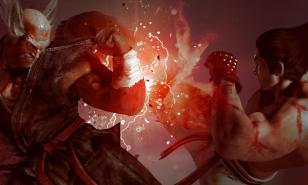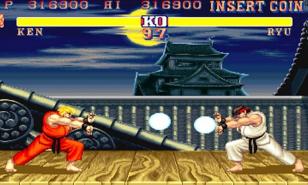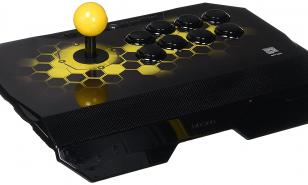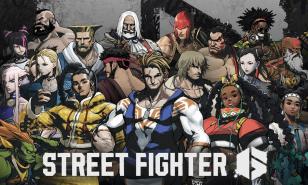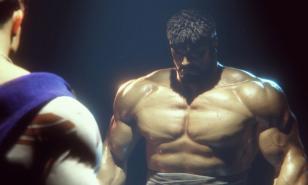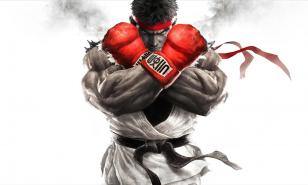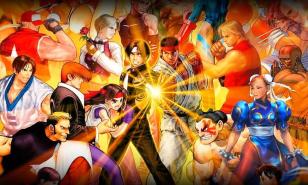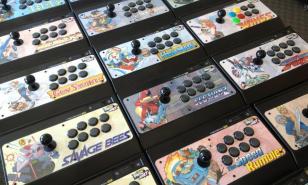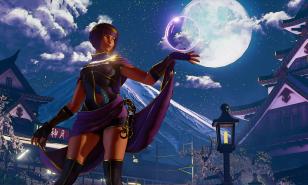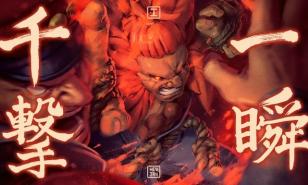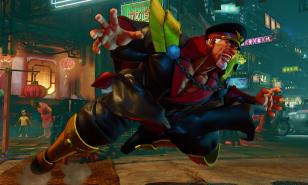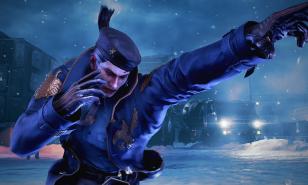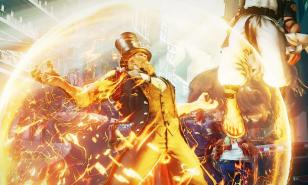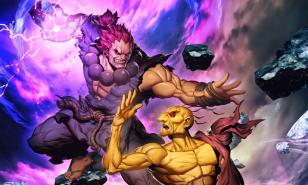[Top 25] Best Street Fighter 6 Tips and Tricks
![[Top 25] Best Street Fighter 6 Tips and Tricks Luke punches a punching bag in Street Fighter 6.](https://www.gamersdecide.com/sites/default/files/styles/news_images/public/streetfighter6-topimage-sf6tipsandtricks.jpg)
Street Fighter 6 is a fun game, but it’s also a complicated one. It’s normal to be a little intimidating initially. Learning which buttons perform which specific attacks with each character is one simpler matter, but learning the game will get more difficult for anyone delving into the Command List to see all the unique moves, Special techniques, and Super Arts each character is capable of. Only then will you be capable of learning the true Street Fighter master.
1. Play the Tutorial at the Game’s Start
Street Fighter 6 begins with a tutorial showing new players precisely how all the game’s functions work. Do NOT skip it.
The tutorial is great for both new Street Fighter players and franchise veterans. Sure, anyone who knows their Street Fighter will know the basic functions of each button, which have worked the same since the Street Fighter II days. But consider the new maneuvers this game includes, like the Drive Impact and Drive Rushing.
No one will learn any powerful combos here, thanks to this tutorial’s basic nature. But both old and new players need a primer for what SF6 entails, especially if you’re an oldie who hasn’t played a Street Fighter game in a while. The Tutorial can be skipped, but that’s not recommended.
2. Just Focus on One Character
Street Fighter 6 now has a roster of 21 characters, three of which have arrived after launch as part of the game’s first downloadable content season. Just stick to one character to start with.
Let’s not undermine how complicated it is to learn one character in a Street Fighter game. Even the easiest characters to play like Lily and Marisa have multiple functions and combos at their disposal, so it’s best to choose one of them to start with to prevent from feeling overwhelmed.
The act of choosing one can be complicated too. This will involve carefully looking over each move set and learning which one fits your style, and perhaps trying them out in the Training room. Don’t try to keep track of the entire move sets of more than one character at the start, even if the move lists aren’t as long as, say, Tekken character sets.
3. Play the Character Guides
If you’re still struggling to settle on a character, the Character Guides will show off every special technique. This mode is essential for learning how each character works, and whether they’ll fit your style.
The Character Guides will teach the player most of the unique attacks for each character, alongside their special techniques and Super Arts. The mode won’t let the player proceed without performing the technique being asked, with the option to view the direct command to perform each move being available. This will teach any player if they can handle a specific character, or whether the player and character will be in sync.
There’s nothing complicated here, and they’re all over quickly. This makes it easy for any player to progress through multiple in-game guides to see which character they’ll jive with the most. This is essential before moving to a more complicated mode.
4. Play the Combo Trials
After settling on a character to learn, it’s time to go further in depth by playing the Combo Trials. These start out easy enough, but they’ll get hard.
The cool aspect of the Combo Trials is how they’ll strategically teach anyone a character’s most basic combos, so the player will learn essential-but-short combos to rely on. These also serve as stepping stones for longer and more damaging combos. There are several Beginner, Intermediate, and Expert options on display, and unlike some previous Street Fighter games (especially the Street Fighter IV titles), the combos taught are practical for real matches. You don't have to finish all of them, but it's good to at least experience them to see what each character is capable of.
This will show you why it’s good to simply focus on one character to start with. The Combo Trials are long and complicated for all characters, essential for learning the basics of linking combos, Drive Rushing, and using Drive Impact to start and continue combos.
5. Play Through the Arcade Mode
Suggesting that a player venture through Arcade Mode might seem like generic advice, but this is a good way for players to find their initial groove in matches. This will happen regardless of their skill sets.
Fighting the AI works when it comes to understanding the tempo of matches, teaching you how to react to more basic moves several characters use with specific moves for your chosen character. This will help you land attacks and block them against multiple moving opponents, considering this mode will pit the player against several characters with various attacks who move at different speeds.
Sure, you won’t truly better yourself by fighting the AI too many times, as there are too many ways to exploit their tactics. But this is good to start with, and not to rely on for learning the best tips and tricks. It’s simply a good beginning way to nail the timing behind attacking and blocking, especially when the difficulty is cranked up higher. Don’t play it too long, though.
6. Play the World Tour
Another way to fool around with a bunch of move sets before settling on one character is to venture through the World Tour. Here, the player will meet all the other characters in the roster, where they’ll have the chance to train under them and learn their move sets.
It will take some time before the player will meet all the other characters in the World Tour mode, but it’s a lengthier way to get a feel for everyone in the roster. You’ll also have a fun quest along the way, fighting several enemies and bosses along the way. The avatar will occasionally have the option of fighting the characters in the roster themselves to test their abilities.
In addition to providing a fun and lengthy time to learn the move sets, the World Tour is also where you’ll earn one set of alternate outfits for each character. This is done by increasing the Bond levels up to level 20, the easiest way to do this involves buying gifts for each character they like. This is in addition to the World Tour being a great way to settle into the game.
7. Master How to Use Drive Impact
The Tutorial at the game’s start will teach you how to perform Drive Impacts. Mastering them is another matter.
After learning how to perform the move, get experience through live matches with either the AI or a human opponent. Here, you’ll learn the best time to use a Drive Impact, and utilize the best opportunities to perform them in the corner to crumple the opponent. It’s similarly worth getting down Drive Impact Punish Counters against the opponent’s attacks, which will cause them to crumple and fall to the ground for combo opportunities. Punishing a Burned-out opponent in the corner with a Drive Impact will send them into a dizzy state, the only way to achieve this in SF6. This will create the biggest combo opportunity you’ll have.
This is also the time to learn what to do when the Drive Impact is landed in the corner, is landed as aPunish Counter, as both will stun the opponent. You don’t want to watch them fall to the ground and fail to take advantage of a prime punishment opportunity, and thus beat yourself up (internally -- no one’s advocating for self-harm here) in the process. It’s also worth learning when you shouldn’t use a Drive Impact, as throwing them out without thinking will lead to YOU being punished.
8. Get Down Drive Rushing
Using a Drive Rush is a great way to get the jump on the opponent, or to extend a combo. But using it efficiently requires practice in both the Training room and through live matches.
Take some time to learn when to attack after a Drive Rush, and what to attack the opponent with. Every character has great options for what to use after performing one, and some attacks can’t be used at all afterward. Learn what combos will work after executing one and quickly getting in the opponent’s face.
Not to mention using one in the middle of a combo, which is even more difficult. This will, of course, be less difficult with practice, and learning which normal attack links work with each character and their unique attacks after performing one. Some combos are taught in the Combo Trials, but not all of them.
9. Practice a Bunch More Bread and Butter Combos
The Combo Trials will teach a bunch of bread and butter combos for each character. But you’ll have to learn some of this yourself.
Those Combo Trials will at least provide the player the inspiration for some of them, alongside the opportunity to understand which normal attacks can be linked to others and Special move-cancelled. Use that inspiration to practice more in the Training mode before applying them in real matches to prevent yourself from dropping them against live opponents. Keep in mind that these are bread and butter combos, and not the complicated strings.
You can also pursue online combo guides for more inspiration on which bread and butter combos each character has access to. But it’s also fun to experiment with this to develop your own unpredictable style and strategy with each character through practicing and applying these moves in live matches.
10. Master the Punishment Opportunities
Winning matches against strong opponents involves punishing opportunities whenever they arise. Don’t let your opponents escape unscathed, and show them that you’re a sophisticated-enough player that they’ll have to use strategy.
This involves you, the player reading this, using BETTER strategies instead. Knowing which attacks leave each character open for punishment opportunities, after their attacks whiff or when they use maneuvers unsafe on block, is a complicated order. This is doubly so when SF6’s roster will continue to expand. But it’s worth pinpointing them when you see this happen for damage opportunities.
You don’t want to waste a good punishment opportunity. For example, if you're fighting an opponent who’s playing Ken (and you’ll fight a LOT of them, as the most popular character in any Street Fighter game), you’ll want to punish them whenever they throw out Shoryukens without thinking first. This will leave them open for several seconds, a great opportunity for a counterattack. Don’t miss them. Learning this through live matches is one matter, but it’s also good to use the AI dummy settings to perform certain attacks to show precisely when the best counterattack opportunity arises.
11. Get Drive Parrying Down
Parrying made its long-awaited return as a general fighting mechanic in Street Fighter 6 in the form of the Drive Parry. Master its uses, and realize that it doesn’t work the same as it does in Street Fighter III.
Drive Parrying is a fantastic alternative to regularly blocking attacks. You’ll recover faster after Parrying an attack compared to blocking, opening a larger door to counterattacking opportunities, and there’s no chip damage when Parrying super techniques. It’s also the only way to block a Drive Impact without suffering critical pushback, especially when in the corner. Even better: A successful Parry replenishes the Drive meter.
As useful as it is, it’s not always the best substitute for blocking. It also doesn’t work the same way as it did in the Street Fighter III games, with Drive Parrying in SF6 having slower start-up and being executed differently (with both medium punch and kick instead of tapping forward). This leads into another lesson.
12. Learning What to Parry
Parrying is useful, and critical for defending against Drive Impacts from the opponent on reaction. But it comes with setbacks and risks that prevent players from relying on it as an equivalent to blocking.
Parrying being mapped to medium punch and medium kick means it’s more difficult to do it on reaction than tapping or moving forward quickly. To start out, don’t try to Parry everything the opponent will throw at you, which will lead to execution errors and punishment from your opponent. Since Parrying is largely useful for defending against Drive Impacts, start with using them to dodge those attacks first.
Over time, you’ll get a second sense for what to Parry, and how to use it more efficiently. It’s still possible to, say, mimic Evo Moment #37 by Parrying Chun-Li’s Super (sorry Justin), but the timing is different. This is another method to practice in the Training room with practice dummy settings. You can also play the basketball minigame available in the Options menu and the World Tour that really could have used Sean Matsuda being the one tossing them. Maybe it’s not too late there.
13. Learn the Benefits of Perfect Parrying
Perfect Parrying is another beast. You perform this when the character Parries an attack just before it lands.
Let’s not understate how difficult this is, as Perfect Parries require incredible reflexes to pull off efficiently. But the benefits are so good that any player who wants to be the best of the best should at least strive to master them. A Perfect Parry will freeze time temporarily, allowing for a big punishment opportunity against an opponent afterward.
Mastering this will put the fear of God into the opponent, after knowing that you’ve practiced efficiently. And you DO have to practice them well to get it down. Like with normal Parries mentioned above, the basketball game is the best way to master Perfect Parries. The game even encourages you to Perfect Parry as much as possible for the best score.
14. Learn How Burning Out Works
The Drive meter functions are extremely useful for landing some of the most hard-hitting attacks every character is capable of. But there’s a risk of overusing them: Burning Out.
Burnout will occur when the Drive meter is expended, leaving a character incapable of performing Drive attacks as the meter replenishes. It will also expose them to a dizzy state if they’re Drive Impacted in the corner. Considering that, it’s still worth going into a burnout state if the player can maximize damage against an opponent with use of the Drive meter.
Burnout is a penalty state, but don’t fear it. Every character has ways to defend themselves against an aggressive opponent’s attack in their attempt to capitalize on damage. Just don’t try any riskier maneuvers while you’re already in a risky state.
15. Mastering Frame Data
The importance of frame data tends to be understated when it comes to fighting games, with some dismissing it by saying it’s not necessary for winning matches. But it has plenty of benefits, especially when it comes to mastering combos.
We’re thankfully well beyond the days of one-frame links from the Street Fighter IV days, which not even the best pro players could pull off every time. But frame data is still worth studying to see which attacks will link to each other for combos. It’s also worthwhile for seeing which attacks are safe on block, and which ones aren’t. Heck, some characters even have attacks that leave them plus on block, at a frame advantage for more frame traps and mix-ups.
Fortunately, mastering frame data is easier than ever in Street Fighter 6. It joins other newer fighting games in providing the data right to the player through an option in the Training mode. You don’t even have to buy a guide that’s sold separately this time.
16. Learning What to Do in the Corner
The corner represents the best combo and pressure opportunity available in a Street Fighter game. Well, when you know how to actually put the pressure on.
The corner is an even more dangerous place to be for the opponent in Street Fighter 6 compared to prior Street Fighter games, solely because of Drive Impact. Landing one in the corner will lead to a guaranteed combo opportunity, especially if the opponent is burnt out. Those are in addition to the corner combo and pressure opportunities available for every character.
The opponent has fewer opportunities to escape in the corner, and some characters without quick reversals like Manon will have a tougher time escaping. Take advantage of the opportunity by at least psyching the opponent out with a solid block string and good pressure. The best maneuver to pull off is a great and lengthy combo, which you’ll learn after ample practice.
17. When to Do a Drive Reversal, and Why
Drive Reversals are some of the most useful attacks in the game, with every character having an opportunity to knock the opponent away to relieve pressure and break the opponent’s tempo at the cost of one bar on the Drive meter. The key here is when to use them.
Use Drive Reversal to occasionally relieve pressure and quickly rethink your strategy in the match going forward. This will also be a way to launch your own counterattack, while, of course, also watching out from an opponent’s Drive Reversal after applying your own pressure. Just don’t get baited into doing it, because most are punishable on block, and all are punishable when whiffed.
Being baited into performing a Drive Reversal and whiffing will leave you open for up to two seconds. Missing one will also result in a loss of the Drive meter, as it requires using two bars. Use them when necessary, but not heavily.
18. Don’t Mash When in a Block String
The best opponents will try to put you in a block string to pressure you, or they’ll bait you into performing unsafe reversals for counterattacks. The temptation to mash your way out will be high. Don’t do it.
Let’s be real here, though: Mashing out of a block string will sometimes work. It’s possible to pop an opponent with a good reversal when they try to put pressure on. But keep in mind that most of these reversals, the most common one being the Shoryuken or some kind of Dragon Punch-style attack, are VERY unsafe when they’re blocked or whiff.
Remember that opponents are learning to read how a player reacts to certain situations during a match -- “downloading” them, in fighting game community lingo. This is another situation where you don’t want to get baited into a massive counterattack opportunity. But also don’t hesitate to try this out on other opponents who aren’t reading this guide too.
19. The Dragon Punch Shortcut
Dragon Punches/Shoryukens, and attacks like them, can usually be performed with a forward, down, and down-forward motion with a punch or kick button. But there’s an easier shortcut here.
They can also be performed by merely pressing or hitting the down-forward motion twice and pressing the punch or kick button. The shortcut has been around since the Street Fighter III days, though it didn’t start being relied on and pointed out until after Street Fighter IV released. (All the silly elitists who said this was added to SFIV for scrubs were proven wrong at the time.) Nowadays, it’s reliable as a great way to use a quick reversal for punishment opportunities and jump-ins.
As in, it’s “reliable” for anyone who hasn’t performed Dragon Punch motions for several characters countless times over the years. Mastering the “traditional” motion is still worthwhile. Consider how many characters who have Dragon Punch-style motions but don’t have shortcuts. Think of the future.
20. Keeping Pressure on the Opponent
Once you’ve learned some good goddamn combos, have discovered and absorbed the knowledge about your character’s reversals, and know how to watch out for the opponent’s counterattacks (all from this guide -- you’re welcome), you can apply pressure to the opponent to bait them into stressful and desperate situations.
It’s true that some characters are better than others, the nature of all competitive games. But every single character on the roster has maneuvers to pressure the opponent through block strings and potentially, and usefully, back them into a literal corner.
The high-tier characters like Ken and Luke have a ridiculous amount of pressure opportunities, one reason why they place so highly. But even those in the lower tiers like Zangief, Lily, and Manon have opportunities to give the opponent an opportunity to panic. They all have a command throw in common, which is all they need to keep the opponents guessing.
21. Don’t Jump in Too Heavily
Jumping in on the opponent is a good tactic for mixing up your game and starting damaging combos after landing a meaty attack or crossing them up. But you’ve absolutely noticed a trend here: Don’t overly rely on it.
Jumping at the opponent is also a surefire way to move in on them, doing so in an arc instead of a straightforward backdash. It will be difficult for the opponent to predict what will happen, or whether they’ll react to it fast enough. But it should only be done when necessary for mix-ups and a lack of options. This is another tool that shouldn’t be overused.
The opponent will absolutely learn precisely what to do to any player who jumps in too many times, which will lead to your playstyle being too predictable. Feel free to jump in and perform cross-up attacks whenever you feel they’re necessary. Don’t hesitate to quickly ponder whether you SHOULD jump in, especially against characters with a reliable anti-air attack.
22. Learning How to Zone
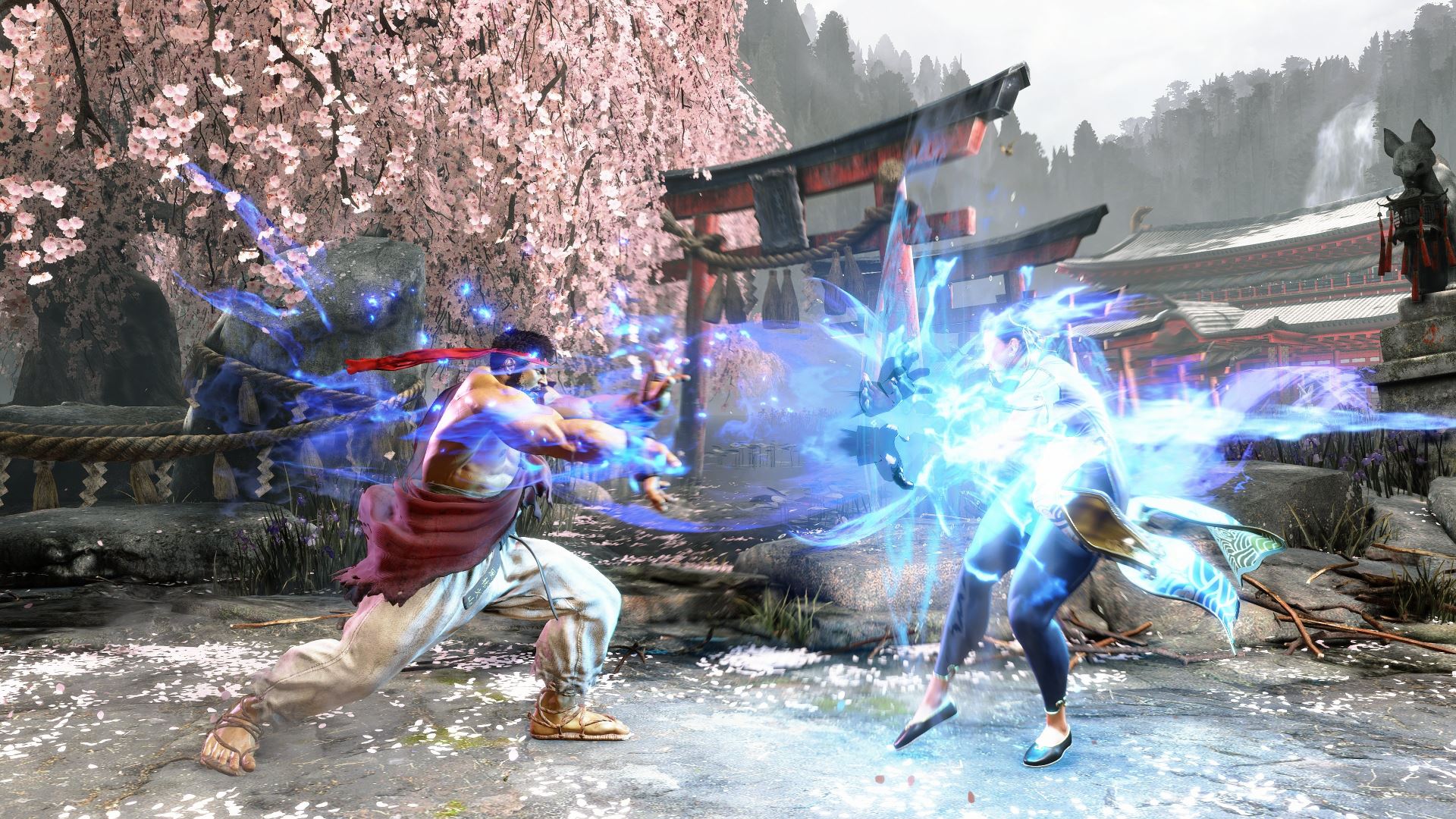
Get in the zone – Fireball Zone. (No apologies.)
A longtime key tactic in 2D fighting games is the option to zone the opponent. This is done through using fireballs or other projectiles, though this depends on the character.
Zoning involves playing a guessing game with the opponent, with projectiles being used to either minorly damage the opponent or keep them back and gauge their position in the fighting arena. Doing so will prevent them from getting up close, and make their options for closing in much harder. Most characters have solid-enough recovery time that they can throw projectiles from a long-range and mid-screen distance while protecting themselves from attacks.
The issue with zoning is, well, characters with no fireballs can’t do it. Others, like Chun-Li, have fireballs that fizzle when thrown from a distance, imperiling their abilities to properly zone. If your character can’t zone, then you’ll have to figure something else out. It’s fine; every character has options to mix-up opponents with different strategies. You’ll absolutely want to use zoning against opponents who provide massive damage up close but will also have trouble getting in, like Zangief and Marisa.
23. How to Carry an Opponent to the Corner
The corner is one of the best places for the opponent to be for the player, and vice versa. Getting the opponent to the corner is another matter altogether.
The best way to get the opponent to the corner depends on the character being used. It’s possible to do through a combination of great combos (sorry) and zoning. Some characters, like Marisa, have plenty of special techniques and combos that will take the opponent to the corner for even more damaging setups, the reason why several players tremble when an opposing Marisa player so much as touches them. Other characters, particularly grapplers, have to work harder. But it’s possible with every character. Characters with good normals are also capable of easily carrying the opponent to the corner and keeping them there.
A good mixture of unpredictable tactics will naturally back the opponent into a literal corner. It’s always been a dangerous place to be in 2D fighting games, but that goes double in Street Fighter 6 thanks to the fear of a Drive Impact -- even when blocked. But it’s a great opportunity when you get the opponent there.
24. Don’t Hesitate to Hop Online

The arena within the arena, so to speak.
You might be tempted to learn all the strategies you can before even thinking about hopping online, with bonus points if that involves reading through the entirety of this guide. But don’t overthink it. Sometimes, it’s best to just hop into the arena.
There are several tactics that will be difficult to drill into your game plan without live practice against a real opponent. Unless you’re lucky enough to have an online training partner you can spar with often, the best way to learn these strategies is to fight another human being and adapt to various gameplay styles. Just remember that others are learning the game and match-ups alongside yourself.
There are also others who just won’t learn, and will try to get away with exploitative tactics online. You’ll just have to outguess them and figure out if they have a gameplan beyond that. Don’t let the feeling of nervousness prevent you from experiencing the thrill of fighting others online.
25. Play to Win at All Times
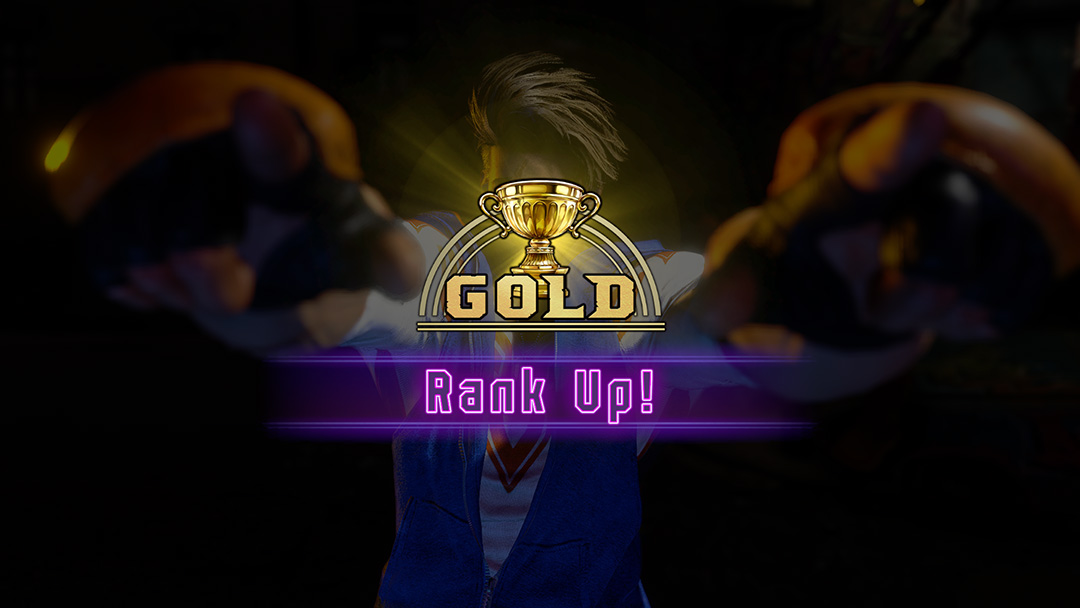
Remember: It could be YOU making these online accomplishments.
Other temptations that you can develop should be ignored while fighting online too. But here’s one key mantra you should follow: Play to win every time you get into a match.
Maybe you’re thinking of adjusting your tactics based on the perceived skill levels of the opponents you’re fighting. Perhaps your strategy involves dialing down the aggressiveness and defensiveness on opponents with less experience in the lower rankings, while cranking it up against those in higher rankings. Don’t do this; always play to win. You’re doing a disservice to less-experienced players by not giving it your best effort every time, because hard fights show fellow players where their faults lie.
This doesn’t account for you dialing your skills down to lull the opponent into a false sense of security, a highly encouraged trolling opportunity that you should absolutely use. Just make sure your opponents don’t play you by returning the favor.
The best way to win matches in Street Fighter 6 is to remain unpredictable, beyond learning how to play the game through picking up these basic, advanced, and expert tactics. It might be a little rough jumping into a world with so many good players these days, but you’ll settle into the groove in little time with ample practice and smarts.
You May Also Like:
- Log in or register to post comments
 Home
Home PC Game Trailers
PC Game Trailers News
News Menu
Menu


























![[Top 10] Street Fighter 6 Best Looking Alternate Costumes Marisa in Alternate Outfit 3 performs a Super Art.](https://www.gamersdecide.com/sites/default/files/styles/308x185-scale-crop--more-top-stories/public/streetfighter6-topimage-sf6bestlookingalts.jpg)
![[Top 10] Fighting Games Like Street Fighter 6 Jin Kazama poses in Tekken 8](https://www.gamersdecide.com/sites/default/files/styles/308x185-scale-crop--more-top-stories/public/tekken8-topimage-fighterslikesf6.jpg)
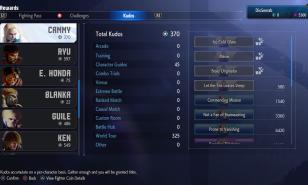
![How To Win Street Fighter 6 Matches [Top 10 Tips] Chun-Li extends her hand to help the player in Street Fighter 6's World Tour.](https://www.gamersdecide.com/sites/default/files/styles/308x185-scale-crop--more-top-stories/public/streetfighter6-topimage-howtowinatsf6.jpg)
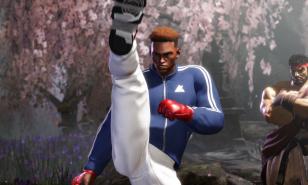

![[Top 10] Street Fighter 6 Best Chun Li Combos List Chun-Li's World Tour introduction in Street Fighter 6.](https://www.gamersdecide.com/sites/default/files/styles/308x185-scale-crop--more-top-stories/public/sf6-chunlitopimage-sf6bestchunlicombos.jpg)
![[Top 10] SF6 Best Luke Combos List Luke gets ready for a punch in Street Fighter 6.](https://www.gamersdecide.com/sites/default/files/styles/308x185-scale-crop--more-top-stories/public/streetfighter6-luke-sf6bestlukecombos.jpg)
![[Top 10] Street Fighter 6 Best Manon Combos List Manon seen in her first alternate outfit in Street Fighter 6.](https://www.gamersdecide.com/sites/default/files/styles/308x185-scale-crop--more-top-stories/public/sf6-topimage-top10manoncombos.jpg)
![[Top 10] SF6 Best Guile Combos List Guile finishes his third Super Art on Ryu in Street Fighter 6.](https://www.gamersdecide.com/sites/default/files/styles/308x185-scale-crop--more-top-stories/public/streetfighter6-guile-sf6bestguilecombos.jpg)
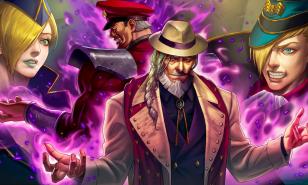
![[Top 5] SF6 Best Controllers Used By Pros A picture of the Hori Fighting Stick Alpha -- Street Fighter 6 Edition.](https://www.gamersdecide.com/sites/default/files/styles/308x185-scale-crop--more-top-stories/public/streetfighter6-topimage-sf6bestcontrollers.jpg)
![[Top 10] Weakest Street Fighter 6 Characters A shirtless Ryu poses in Street Fighter 6's intro.](https://www.gamersdecide.com/sites/default/files/styles/308x185-scale-crop--more-top-stories/public/streetfighter6-topimage-sf6weakestcharacters.jpg)

![[Top 10] Street Fighter 6 Best Players Tokido and MenaRD stare each other down before their big match at Evo 2023.](https://www.gamersdecide.com/sites/default/files/styles/308x185-scale-crop--more-top-stories/public/streetfighter6-topimage-top10sf6players.jpeg)
![[Top 20] Street Fighter 6 Best Gear in The Game The Player Avatar observes Beat Square in Street Fighter 6's World Tour.](https://www.gamersdecide.com/sites/default/files/styles/308x185-scale-crop--more-top-stories/public/streetfighter6-topimage-sf6bestgamegear.jpg)
![[Top 10] Street Fighter 6 Most Played Characters Ken during preparation for his third Super Art.](https://www.gamersdecide.com/sites/default/files/styles/308x185-scale-crop--more-top-stories/public/streetfighter6-topimage-sf6mostplayedcharacters.jpg)
![[Top 10] SF6 Best Characters That Are Powerful Ken punches Ryu in the face as part of his Critical Art in Street Fighter 6.](https://www.gamersdecide.com/sites/default/files/styles/308x185-scale-crop--more-top-stories/public/streetfighter6-topimage-sf6bestpowerfulchar.jpg)
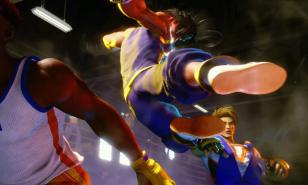
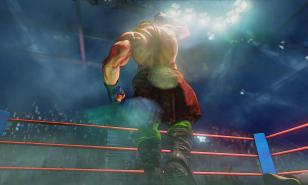
![[Top 10] Best Street Fighter Characters (Ranked) The Best Street Fighter Characters in History](https://www.gamersdecide.com/sites/default/files/styles/308x185-scale-crop--more-top-stories/public/sf6-mainimage-top10sfchar.jpg)
![[Top 10] SF6 Best Combos That Wreck Hard Ken preparing his Sit Down and Shut Up Super Art](https://www.gamersdecide.com/sites/default/files/styles/308x185-scale-crop--more-top-stories/public/sf6-ken-top10combos.jpg)



![[Top 10] Street Fighter 6 Least Played Characters Rashid uses his best Super Art on Luke](https://www.gamersdecide.com/sites/default/files/styles/308x185-scale-crop--more-top-stories/public/streetfighter6-topimage-sf6leastplayedcharacters.jpg)
